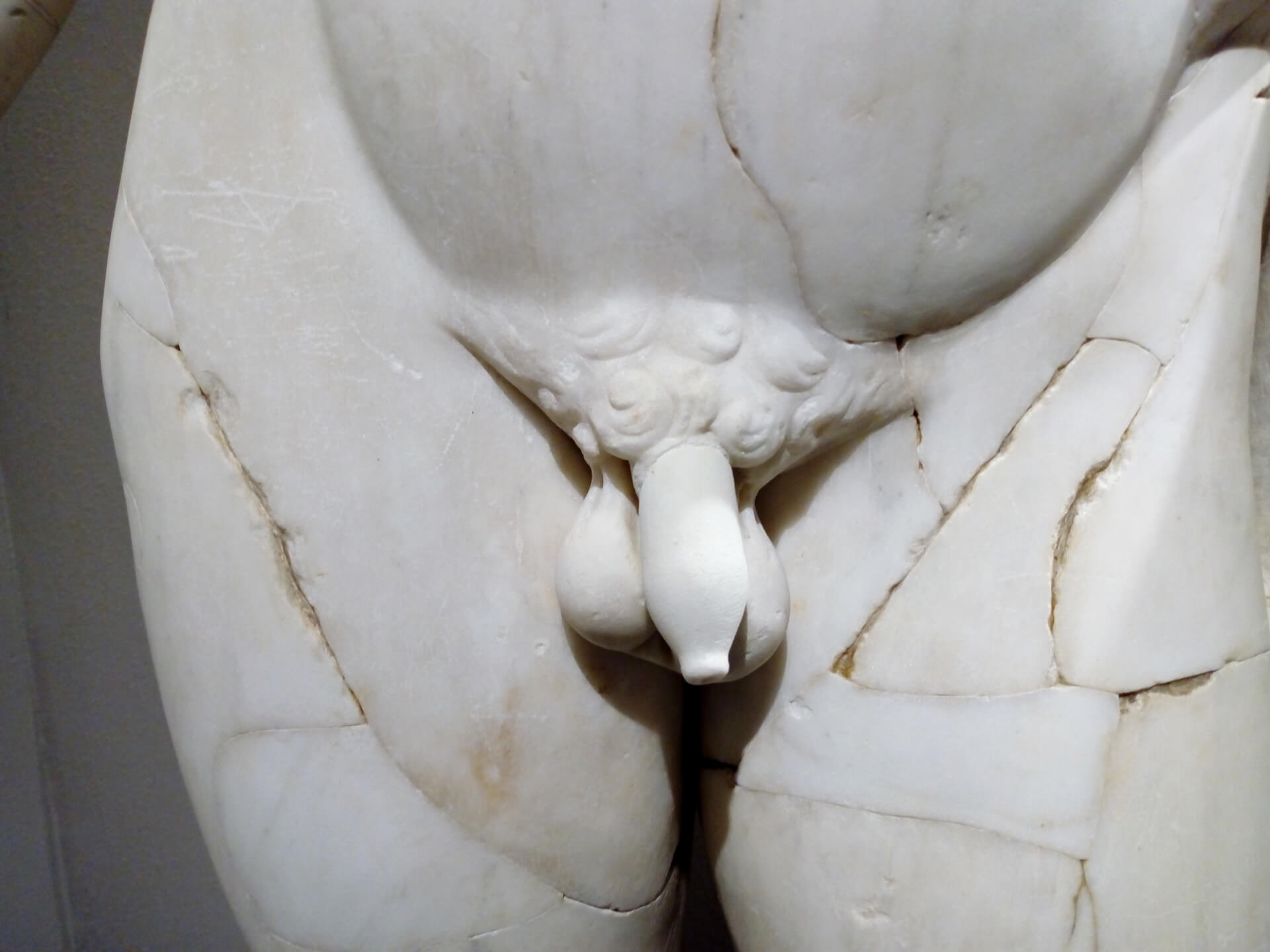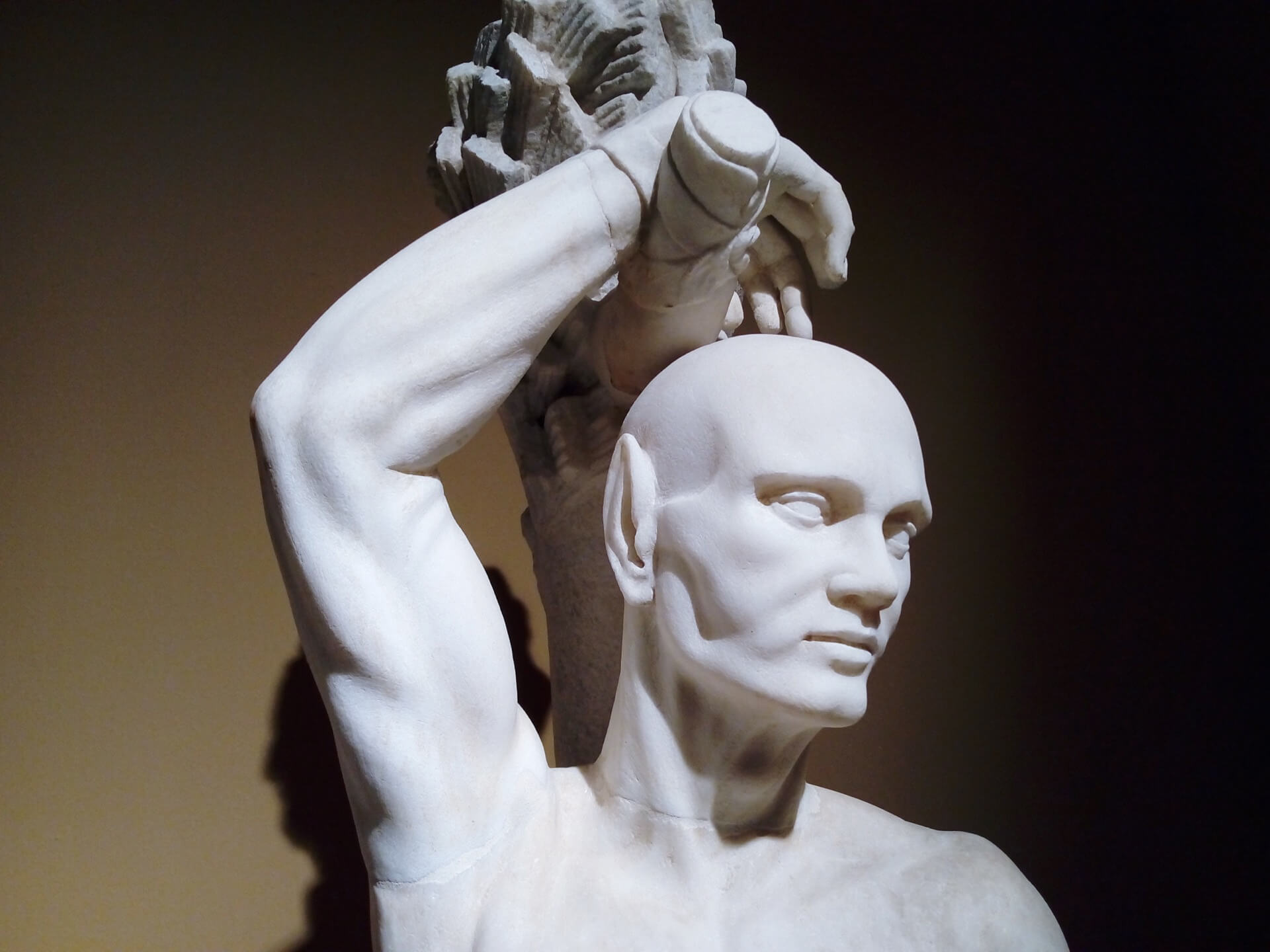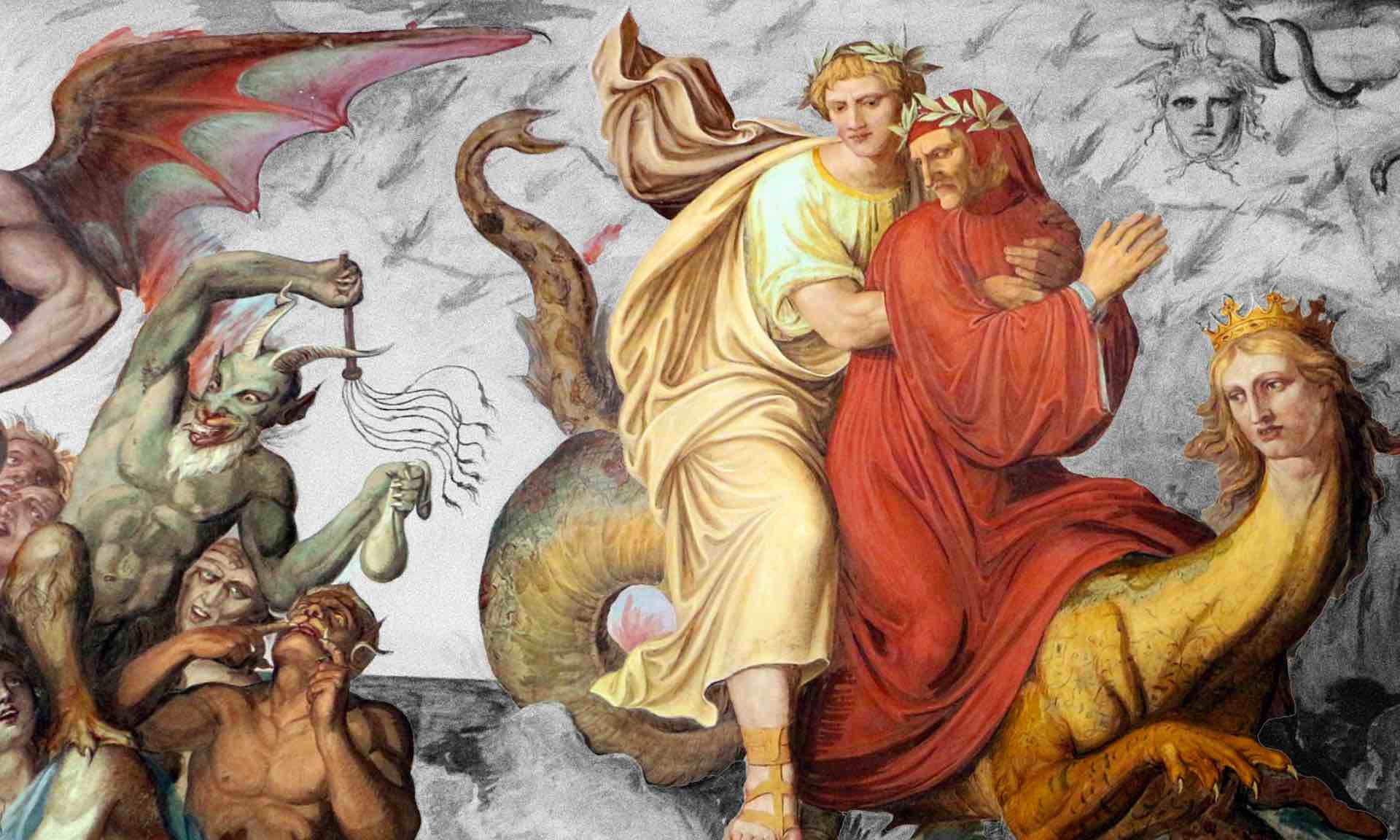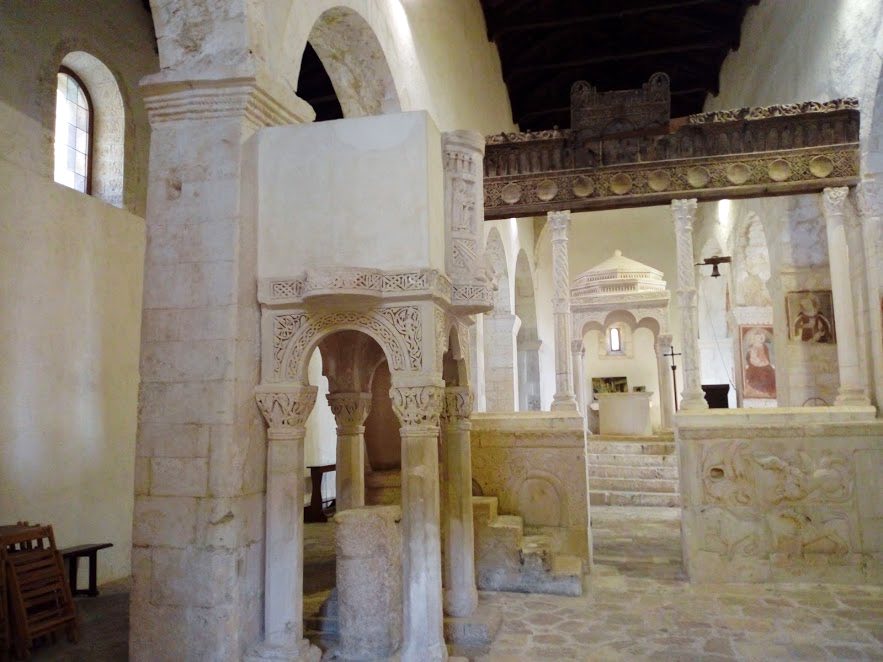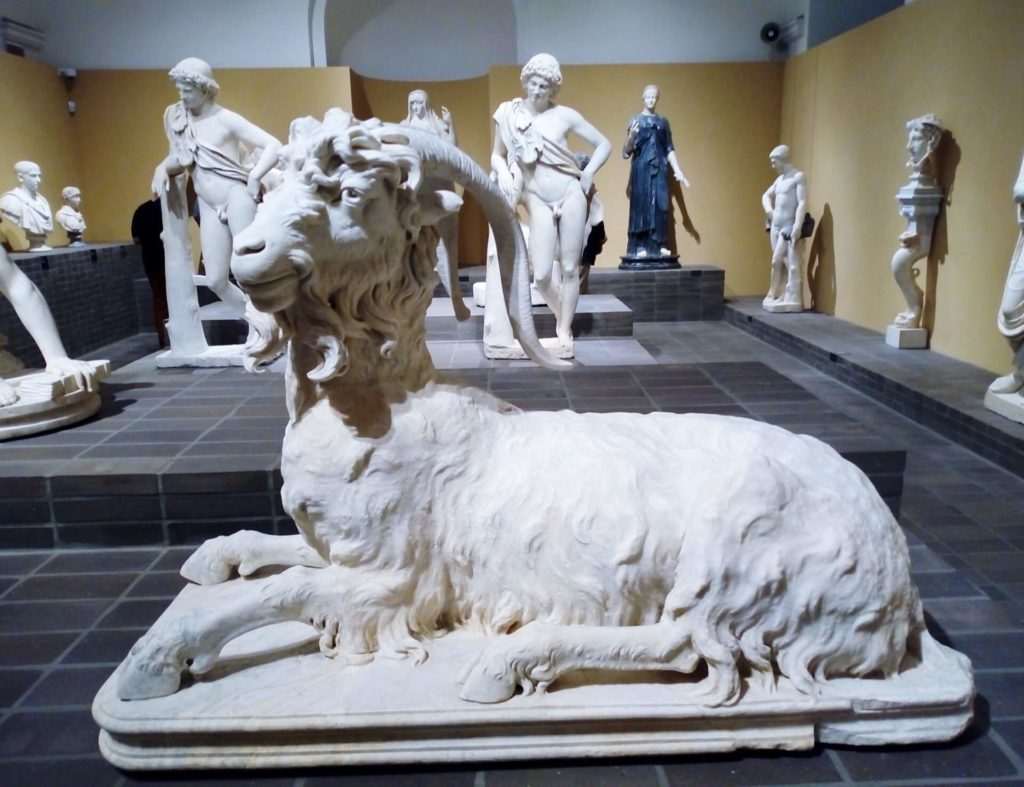
Caprone: this goat from the Giustiniani collection highlights the care that went into the restoration of these ancient sculptures. The body dates from the 1st century CE, but the head is attributed to Gian Lorenzo Bernini (1598-1680).
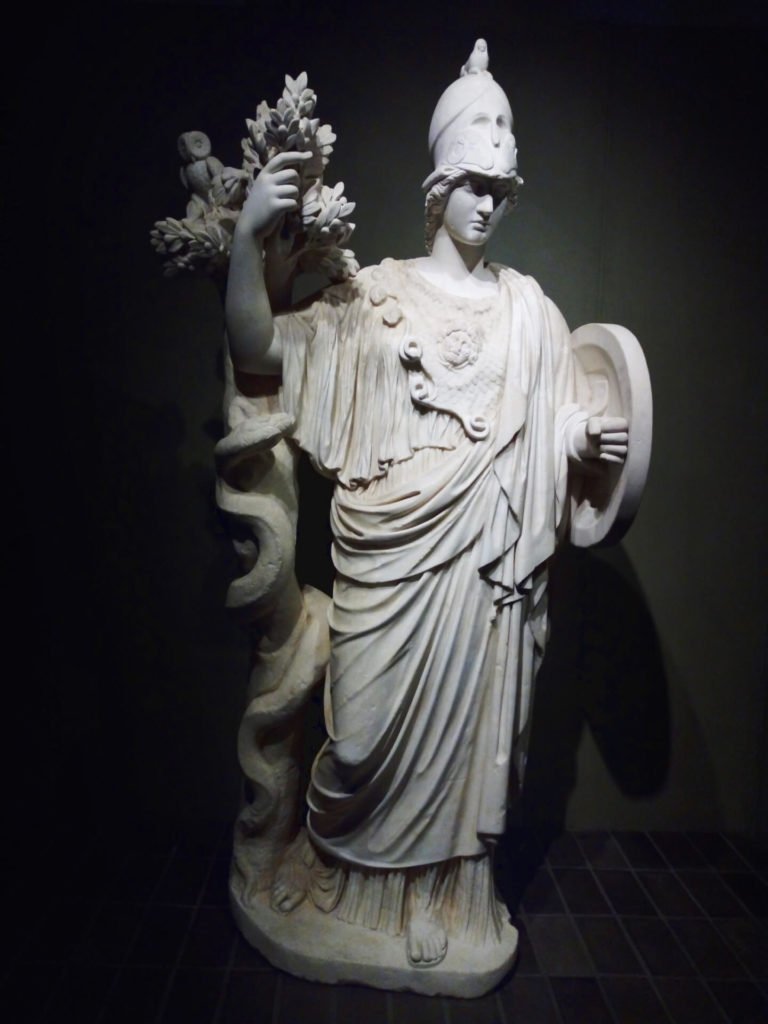
Athena Giustiniani (Greek marble with Italian marble additions: c. 140-160 CE).
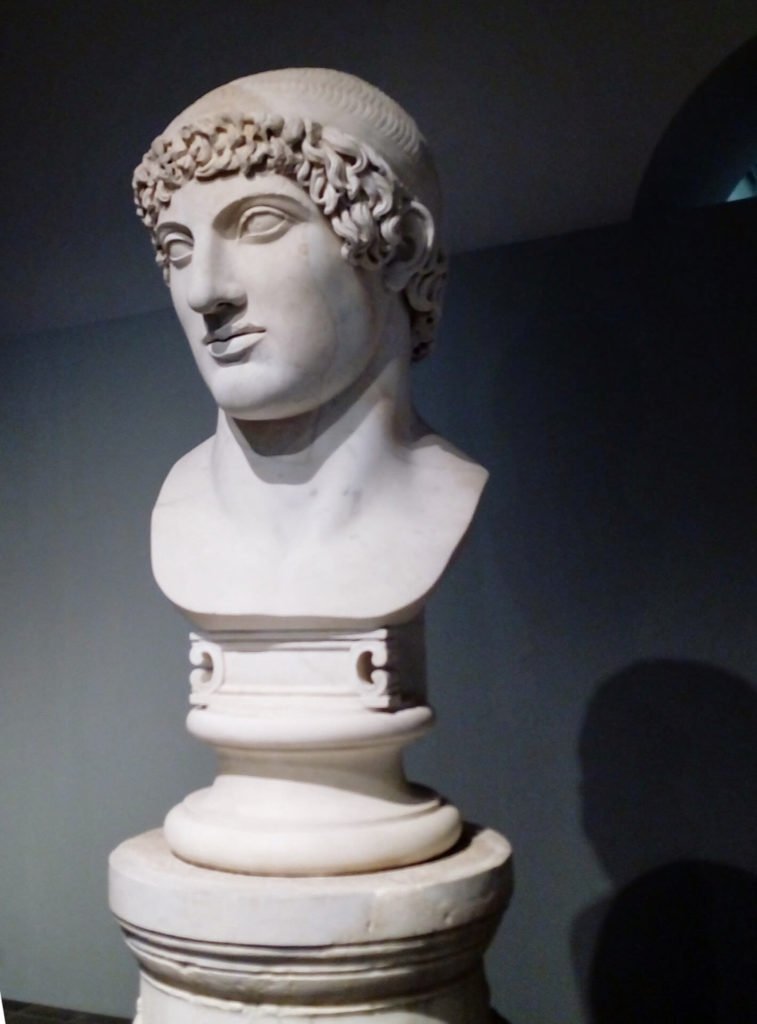
Ptolemy (Pentelic marble: c. 120-140 CE).
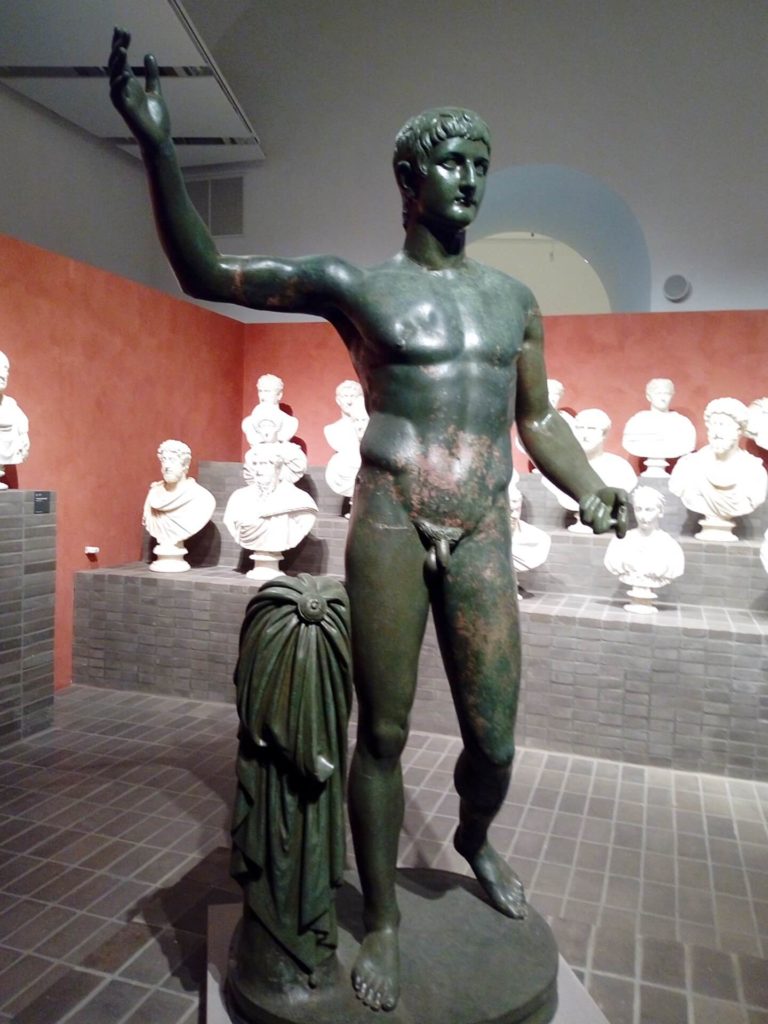
Germanicus (Bronze: 1st century CE).
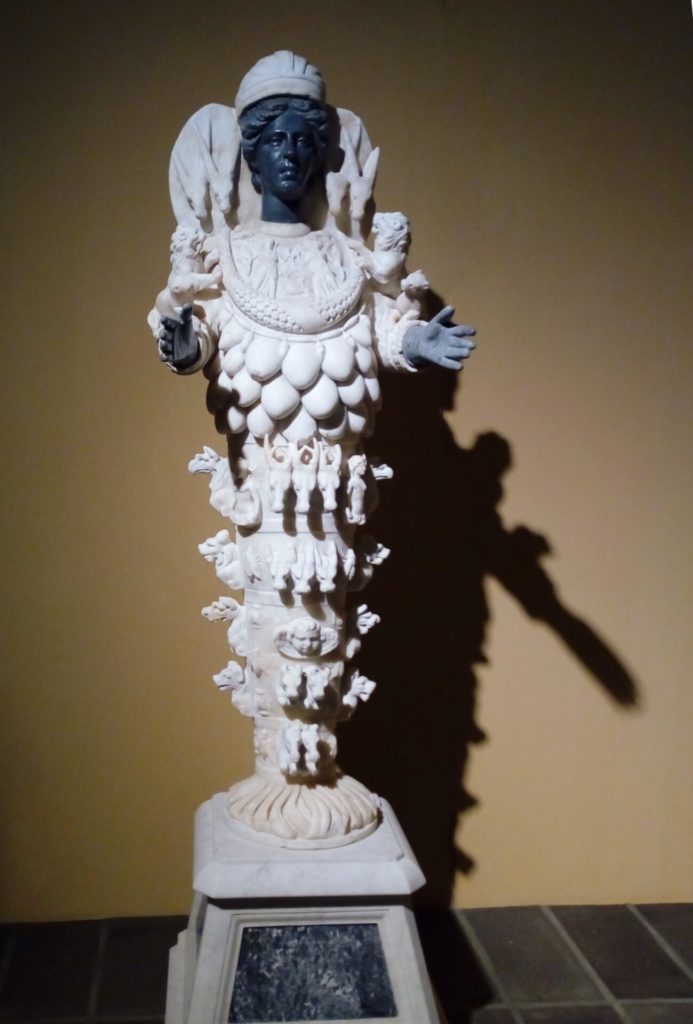
Artemis Ephesia: this statue from the Giustiniani collection was restored using black marble (2nd century CE).
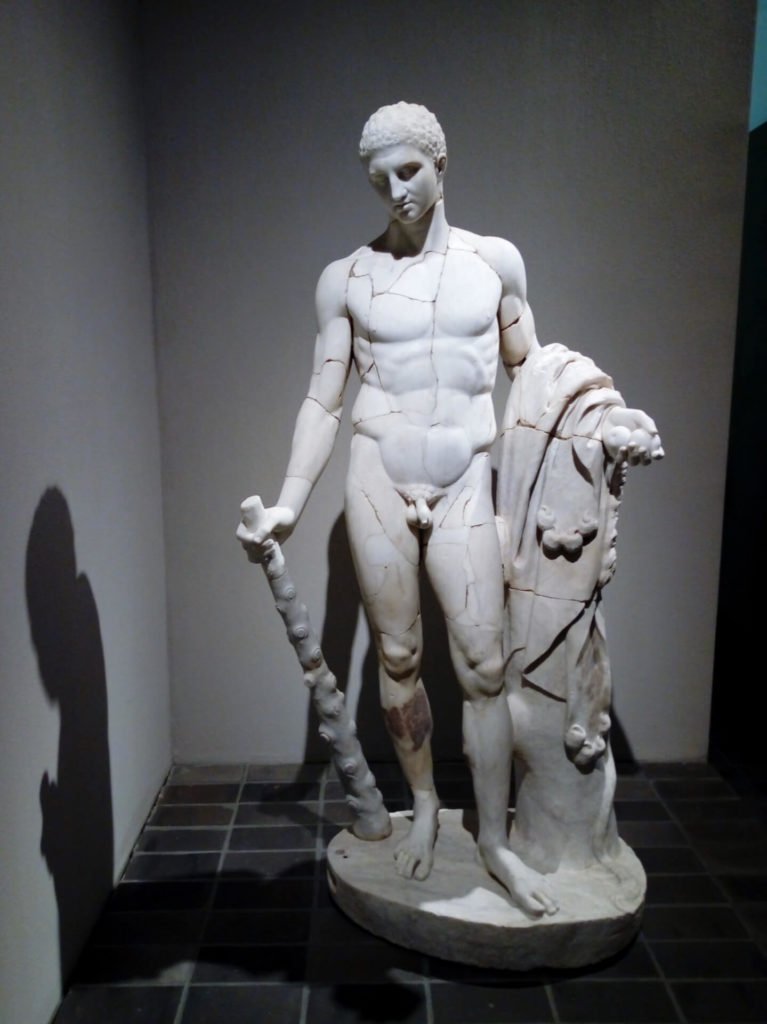
This Hercules originating from The Giustiniani collection is a patchwork composed of fragments of different ancient statues with some recent additions.
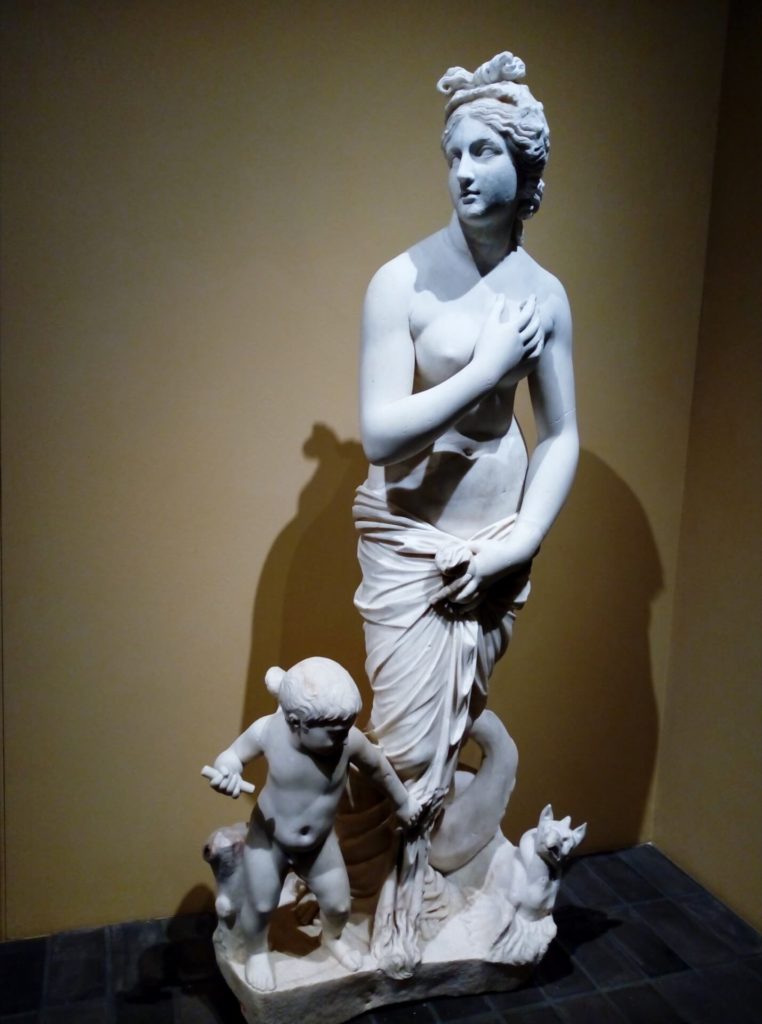
This group consisting of Aphrodite, Eros and Ketos (Cetus) belonged to the Giustiniani collection. It dates back to the first half of the 2nd century CE, although the goddess’s head was a later addition. The Ketos was the sea monster that was slain by Perseus in order to save Andromeda.
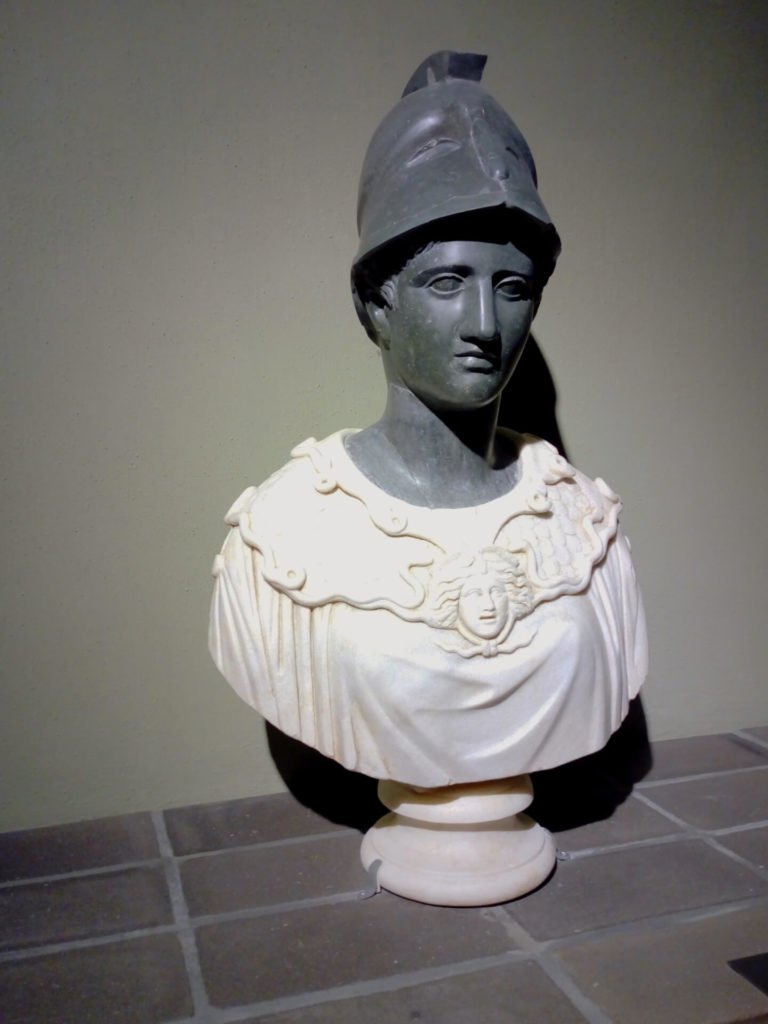
The Athena Cesarini actually consists of a male basanite head from the 1stcentury CE on a recent bust.
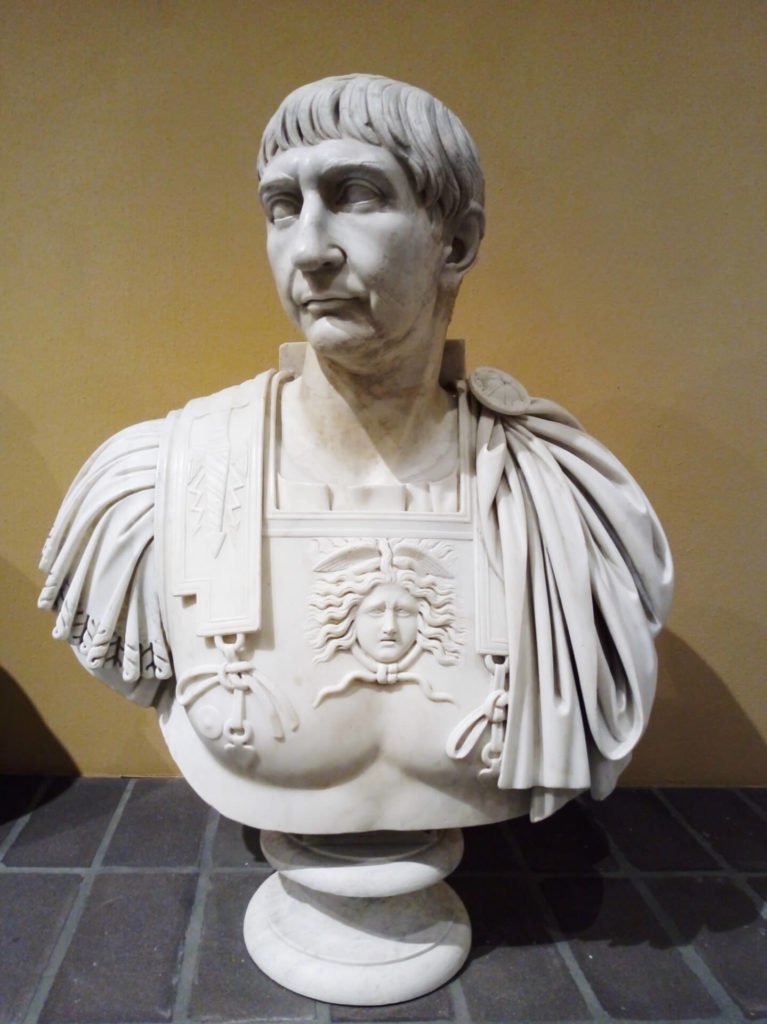
Portrait of Emperor Trajan - reigned 98-117 CE – acquired from the Giustiniani collection and dating from the first half of the 2nd century: Luna marble on modern bust.
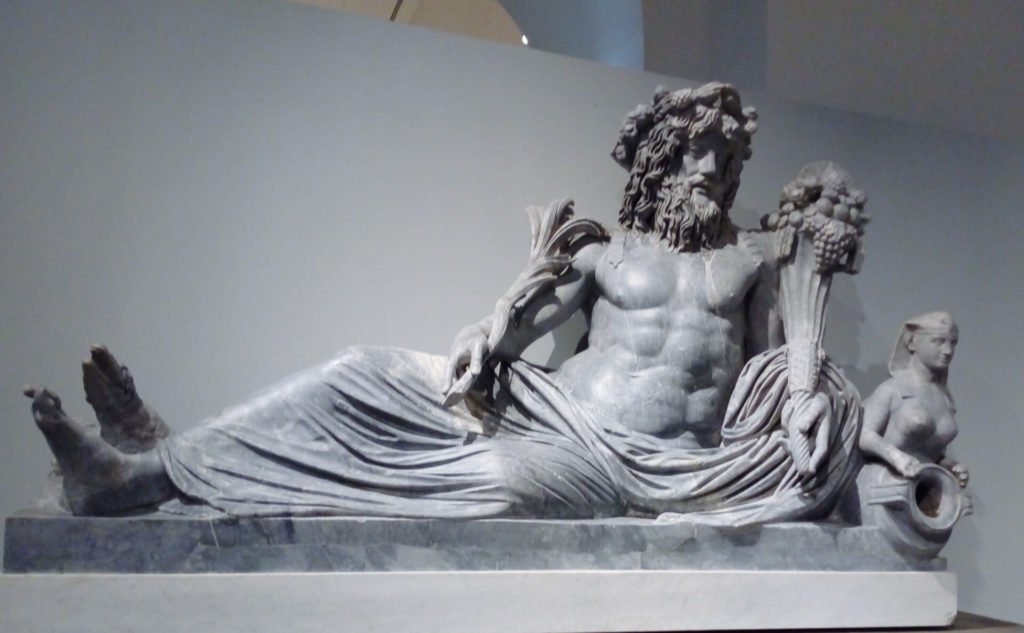
The Barberini-Albani Nile: grey marble - c. 70-100 CE.
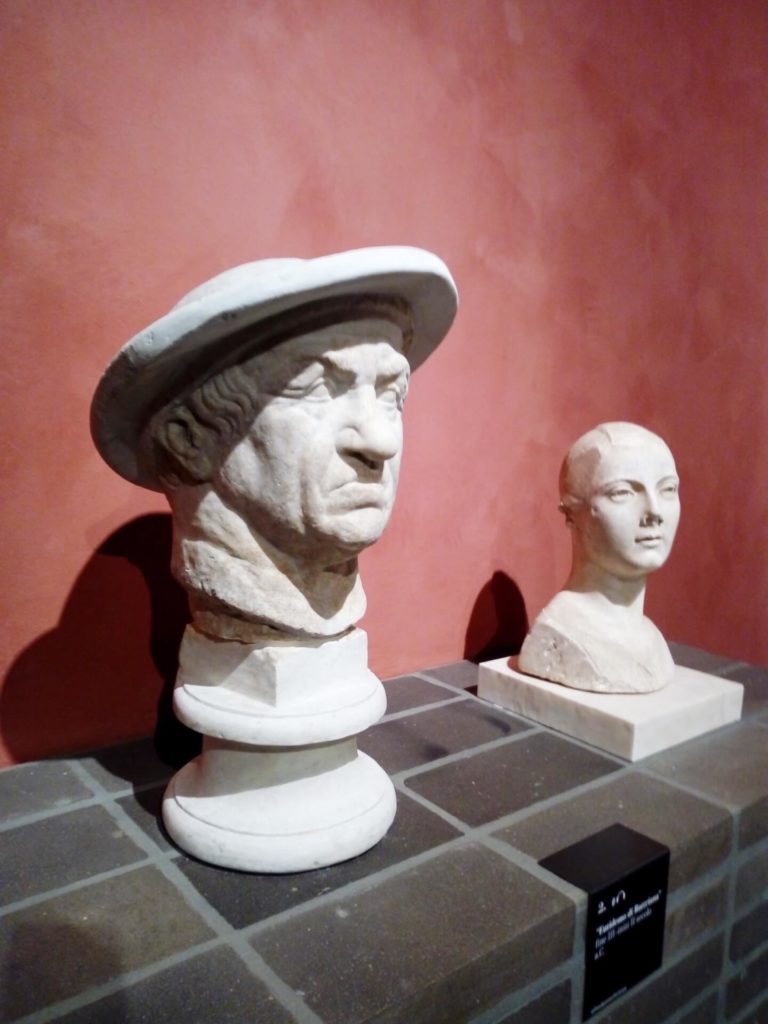
The man’s head, known as Euthydemus of Bactria from the Giustiniani collection (late 3rd-early 2nd century BCE) was originally thought to represent a peasant because of his rough features, however the consensus is now veering towards the idea that this “Euthydemus” was a probably a person of some distinction. By contrast, the girl, carved in white marble, (c. 40-50 BCE) is particularly refined.
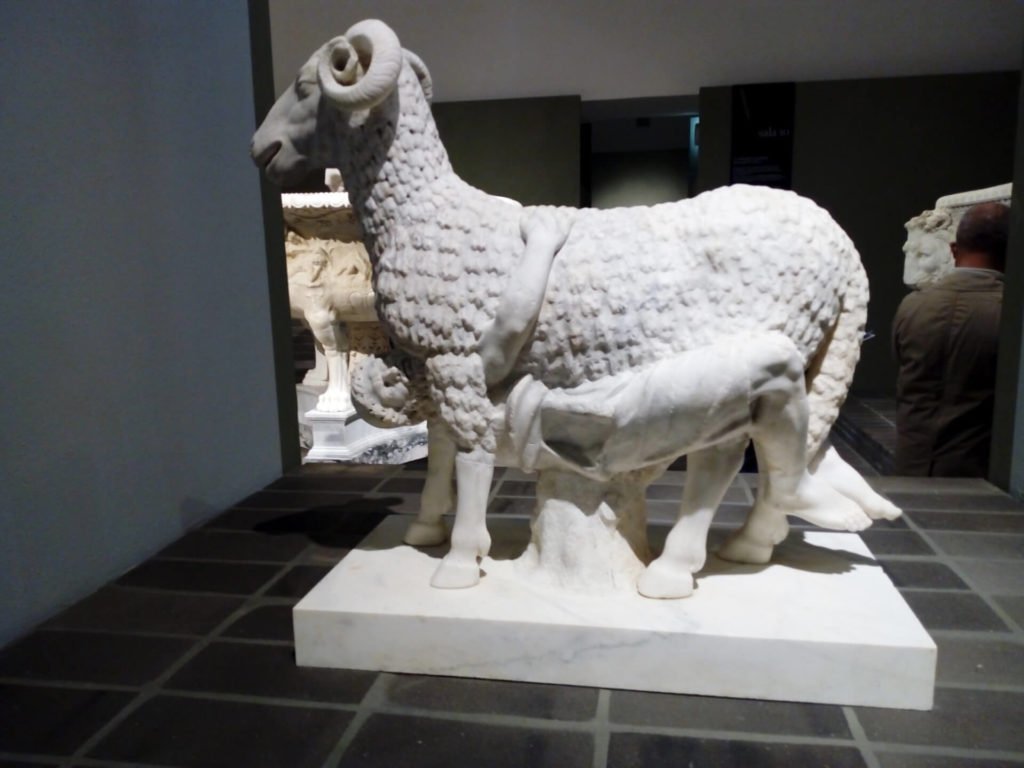
Ulysses escaping from Polyphemus’s cave: Luna marble (second half of the 1st century CE).
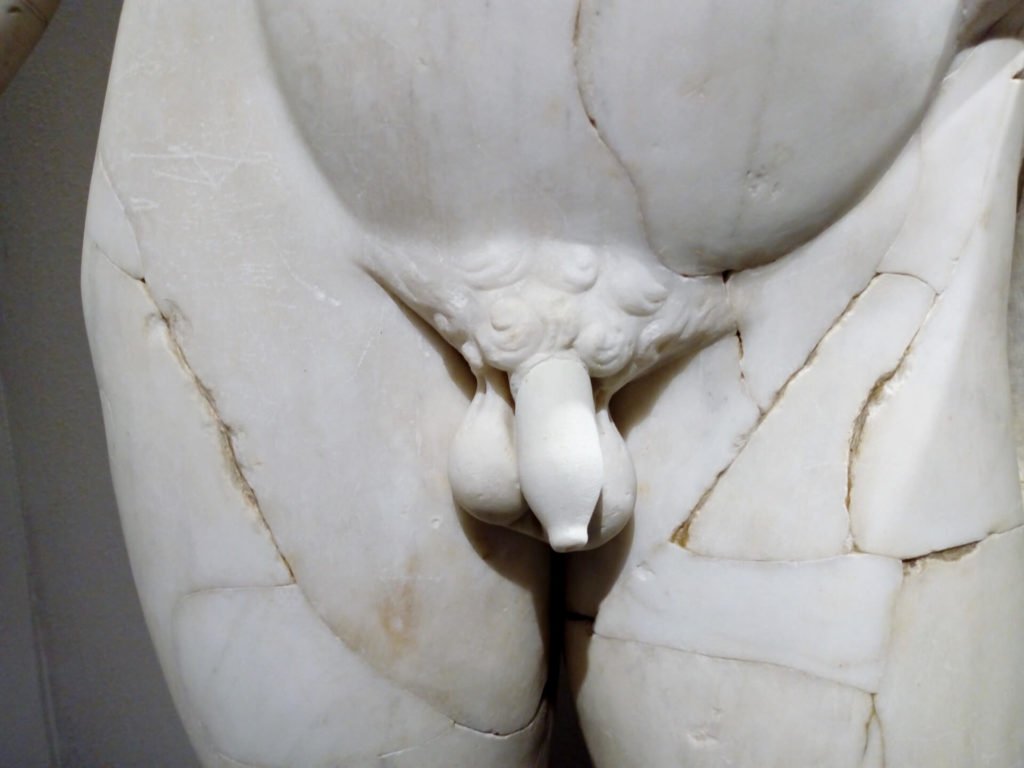
One of the fragments making up the body of Hercules


